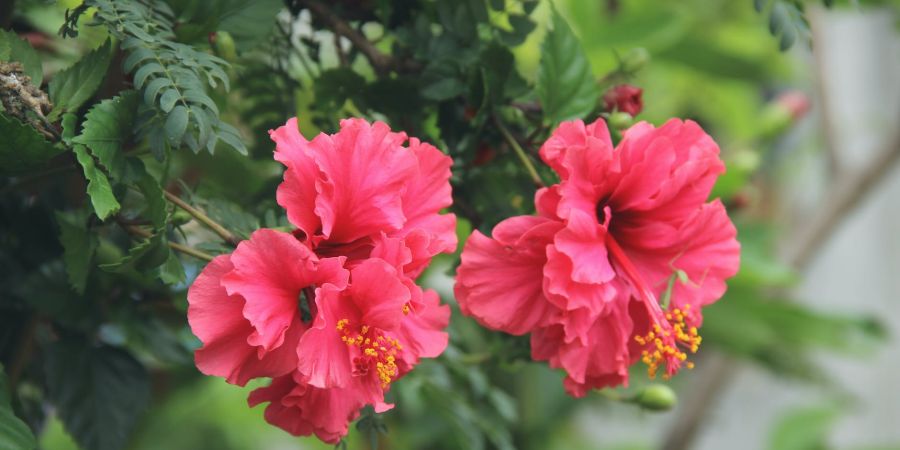

I like carefree and drought tolerant plants for the drier areas of my landscape. I find that many of my favorites are either native to our area or come from Australia. So it is with a beauty of a shrub called Blue Hibiscus. The name Blue Hibiscus is really a misnomer. The flowers are not really blue and it is not a hibiscus. Its given botanical name is Alyogyne huegelii and it is related to mallows. Named after a 19th century botanist by the name of Baron Karl Alexander von Hugel, this native of Western Australia does very well in our desert soils. This plant is evergreen and fast growing. It will grow to about 6 to 8 feet tall and wide. The leaves are toothed, very wrinkly and deeply cut with three to five lobes. The flowers occur heaviest in spring into early summer and then sporadically through the rest of the summer. Flower color depends on the variety and can be rose, violet, purple or white. Plants do best in full sun although it will appreciate some afternoon shade here in the low desert. It will tolerate partial shade conditions but the blooms will not be as profuse. Although it is very drought tolerant, Blue Hibiscus does need some supplemental summer water to look its best. It is not frost tender and has been known to withstand temperatures down to 12 degrees
The flowers will last longer if protected from our drying winds. This can be accomplished by planting near walls or buildings that can block the prevailing winds. Blue Hibiscus should be pruned to keep its growth compact and to promote flowering. Without pruning it tends to grow more open and can get straggly looking with no leaves on the lower branches. In addition, flowers will be less plentiful. Pruning can be done two different ways. A hard pruning can be done after its first heavy flowering flush is over in early spring. This will allow the plant time to re-grow and bloom again. For a less drastic pruning, it can also be lightly trimmed throughout the growing season to preserve its shape.
Of particular significance in hibiscus history is the island nation of Mauritius located off the eastern coast of Africa. Many native plants have traveled from this island to other parts of the world since the early 18th century. Then, in the early 19th century, Charles Telfair, a botanist and surgeon with the British Royal Navy left his home in Belfast, Ireland to settle in Mauritius, where he and his wife, Annabella, documented their twenty-year journey of hybridizing hibiscus. His contributions to horticulture are still honored today — the colonial château the couple occupied was converted into a restaurant adorned by watercolors of the local flora painted by Annabella, and the name of a prominent business school on the island was renamed as The Charles Telfair Institute.
